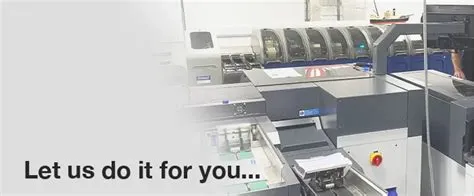Hey there, business owners and branding enthusiasts! Ever stopped to think about your humble business ID card? It’s more than just a piece of plastic; it’s a mini-billboard for your brand, a key to access, and a symbol of belonging. But in today’s world, where sustainability and innovation are top of mind, are your ID cards keeping up? Let’s dive into the exciting world of innovative business ID card design trends, focusing on how we can make them both stylish AND eco-friendly.
We’re all familiar with the standard plastic ID card. It’s ubiquitous, reliable… and frankly, a bit boring. But what if I told you there’s a whole universe of possibilities beyond the usual plastic? From materials to design elements, we’re seeing a massive shift toward more sustainable and creatively expressive ID cards. Think of it as a mini-revolution in the world of corporate identity.
The Eco-Conscious Shift: Embracing Recycled Materials
One of the most significant trends is the growing popularity of eco-friendly ID card materials. Are you tired of contributing to plastic waste? Well, so are we! Many businesses are now actively seeking out alternatives to traditional PVC, opting for recycled materials and sustainable production methods. This isn’t just about doing the right thing for the planet; it’s also about aligning your brand with consumer values. More and more people are choosing businesses that reflect their commitment to sustainability.
Using recycled materials for your ID card production is a fantastic way to showcase your company’s values. It’s a powerful statement that speaks volumes about your commitment to environmental responsibility. Think about it: your ID card is a tangible representation of your brand, and choosing eco-friendly materials reflects that commitment in a very visible way. It’s like a tiny, yet impactful, declaration of your company’s sustainability goals. For more information on eco-friendly materials, check out our comprehensive guide on eco-friendly ID card materials.
Beyond the Basics: Exploring Material Options
Let’s talk materials! What are some of the exciting alternatives to traditional PVC? Well, there are several excellent options gaining traction:
Recycled PVC: This is a great starting point. Using recycled PVC reduces the demand for newly produced plastic, minimizing your environmental footprint.
Biodegradable Plastics: These plastics break down naturally, reducing landfill waste. They are a fantastic step toward a truly sustainable ID card.
Paper-based cards: Believe it or not, paper can be a durable and stylish option for ID cards, especially when laminated or treated for enhanced longevity. It’s a fantastic low-impact choice, even if it’s not as resilient as plastic. For more information on paper and eco-friendly printing techniques read our blog on eco-friendly printing techniques
Bamboo: This rapidly renewable resource is becoming increasingly popular in various industries, and ID cards are no exception. It offers a unique, natural look and feel.
The choice of material will often depend on your budget and the level of durability you require. But remember, even small changes can make a big difference. Switching to recycled PVC, for instance, is a relatively simple yet impactful step.
Design Trends That Make a Statement
The shift towards sustainable materials doesn’t mean sacrificing style. In fact, it’s quite the opposite! We’re seeing a surge in creative and innovative ID card designs that reflect both environmental consciousness and brand identity.
Minimalist Designs: Clean lines, simple color palettes, and uncluttered layouts are trending. This approach allows your logo and essential information to shine, creating a sophisticated and memorable impression.
Bold Typography: Using a striking font can elevate your ID card’s visual impact, making it stand out from the crowd. Think about using a font that reflects your brand’s personality.
Custom Illustrations and Graphics: Adding custom illustrations or graphics can inject personality into your design. Think about integrating elements that represent your company’s values or industry. It’s a fantastic opportunity to create a unique and memorable ID card. And if you are thinking about personalization, check out our article on customization and personalization in ID card design
Embossing and Debossing: These techniques add texture and depth to your ID card, elevating its perceived value and making it more tactile.
Creative use of Space: Think beyond the usual rectangular shape! Explore different sizes, cuts, and layouts to create a truly unique ID card.
Integrating Technology: Smart Cards and Beyond
Technology is transforming ID cards as well. Smart cards, equipped with microchips, offer enhanced security and functionality. These cards can store additional data, such as employee access credentials, payment information, or even health records. Imagine the possibilities!
We are seeing a rise in digital ID cards as well. These offer convenience and flexibility. Check out our blog on digital and virtual ID cards for more information.
Industry-Specific Designs: Tailoring Your ID Card
Your ID card should reflect your industry. A tech company’s ID card might feature a futuristic design, while a healthcare provider’s card might emphasize professionalism and trustworthiness. The possibilities are as vast as the industries themselves!
Don’t be afraid to experiment. Your ID card is a powerful tool to create a consistent brand image. Consider consulting our post on industry-specific ID card designs for inspiration. And for functional aspects of your ID card design check out our blog on functional aspects of industry-specific-id-cards.
The Big Picture: Why it Matters
So, why should you care about all this? Because your ID card is more than just a piece of plastic (or paper, or bamboo!). It’s a reflection of your brand, a symbol of your company culture, and a statement about your values. Choosing sustainable materials and innovative designs is a smart move— both environmentally and strategically. It shows you’re forward-thinking, responsible, and committed to creating a positive impact. It’s a small change that can have a big impact.
Conclusion
The future of business ID card design is bright, sustainable, and brimming with creativity. By embracing recycled materials and innovative design trends, you can create ID cards that are both environmentally responsible and powerfully represent your brand. It’s a win-win situation – for your business and for the planet. So, take a look at your current ID cards and ask yourself, “Is it time for an upgrade?”
FAQs
1. Are recycled ID cards as durable as traditional plastic cards? The durability of a recycled ID card depends on the specific materials used and the manufacturing process. Some recycled options are just as durable, while others might require a bit more care.
2. How much more expensive are eco-friendly ID cards? The cost of eco-friendly ID cards can vary depending on the materials and production methods. However, the price difference is often negligible, and the long-term benefits far outweigh the initial cost.
3. Where can I find suppliers who offer sustainable ID card materials? Many ID card manufacturers are now offering sustainable options. You can do an online search, and we encourage you to explore your current supplier’s offerings as well.
4. Can I incorporate my brand’s colors and logo into an eco-friendly ID card design? Absolutely! Sustainability doesn’t mean sacrificing your brand identity. Eco-friendly materials are compatible with various printing and design techniques.
5. What are some design tips for creating an eco-friendly ID card that still looks professional? Focus on clean lines, simple color palettes, and high-quality printing. Consider using sustainable inks and avoiding excessive embellishments. Minimalist designs often look incredibly professional and modern. Check out our main blog here for more design inspiration!

